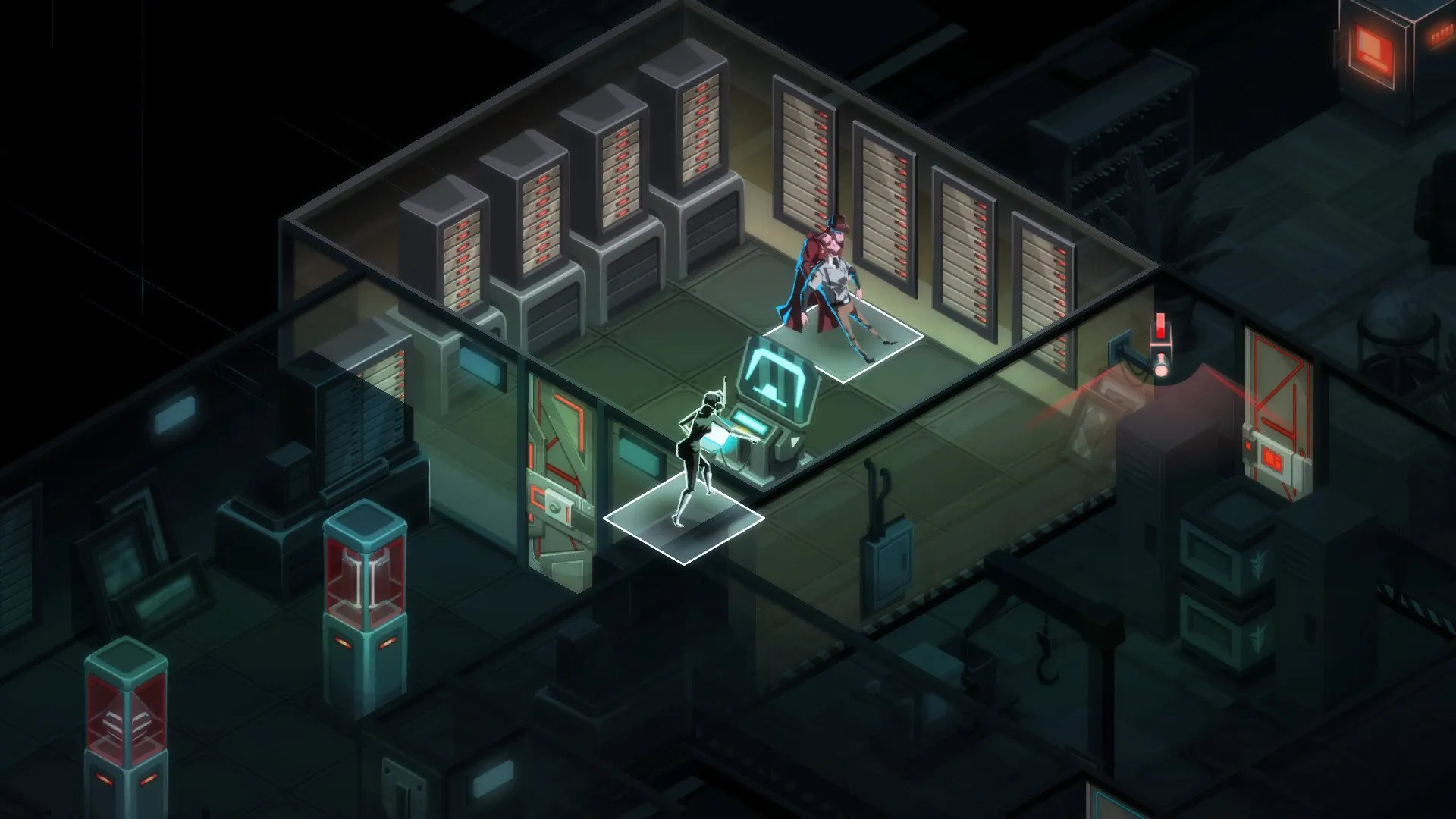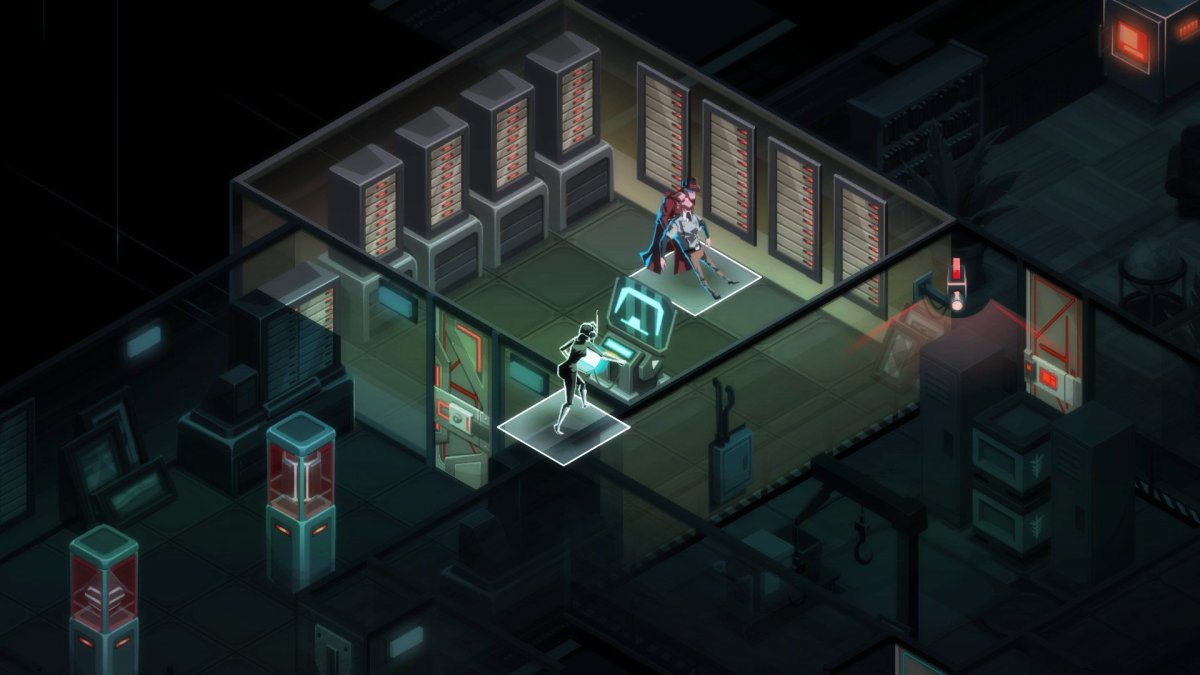Invisible, man
It feels weird to be finally reviewing a game I played more than anything else last year despite it being in Early Access. I mean, I already gave it a Game of the Year award. Klei (Don’t Starve, Mark of the Ninja) has perfectly, sensibly mashed up two genres with its stealth turn-based Invisible, Inc.
In a not too far off future of corporate villainy, Invisible is an underground network aiming to undo the controlling corporate overlords. Invisible is sussed out, however, leaving you, the Operator, with 72 hours to gear up two surviving agents and plug the powerful Incognita AI back into a suitable host lest the group be done for good.
Chances are you’ll cock it up and have to try again. Invisible, Inc. occupies an XCOM-like space where failure is a plausible end result to one story, not a reset state. Unlike the latter, however, the 72-hour time constraint makes for snappy runs in the modern roguelike vein.
And every damned time I doom the agency, I feel compelled to start right over.

Invisible, Inc. (PC [reviewed], Mac)
Developers: Klei Entertainment
Publisher: Klei Entertainment
Released: May 12, 2015
Price: $19.99
Stealth games often offer two tonal paths. You are ill-equipped, powerless and possibly stay that way (horror), or you are preternaturally talented, improving stats and skills further until you are Batman-like (most “detective mode” games). Invisible, Inc. gives you all the information needed to succeed. Sight lines are obvious and clear. Enemy routes can be precisely observed (for 1 AP). You can peek around corners or behind doors (again, 1 AP). And you have the Incognita system which can hack devices — cameras, turrets, item machines — to help you complete your infiltrations. Screw ups aren’t twitch-based dissonance, like frantically steering Snake into a wall when spotted.
What you butt up against, then, is a series of balanced checks that gives you tools to succeed and becomes about execution. Hacking requires power, which can be stolen from consoles or generated once per turn (with the default Incognita setup). Agent movement is limited by action points. Hastily enter a door and you may be exposed, without enough AP to set up behind cover. Peek and observe the patrol route of the guard next door and you may find that he is coming right to where you are, your melee stun device is still recharging, and you no longer have the AP needed to get back into cover.
And if you think the answer is to take things slow, creeping along a few squares at a time, know that each procedurally generated stage has an alarm that raises by one tick each turn. Every time the alarm goes up a full level, you’ll be facing additional cameras or extra, better outfitted guards, or higher power costs when hacking.
All the systems are at odds with each other and it is exhilarating. You want to find the exit quickly, before things get too difficult to handle, yet the whole point of your infiltration to to quickly prepare for a big standoff, which means it’s better to steal all the credits and gear that you can, to explore every room. You have to spend power to open safes, but also to rewire cameras or turrets, things that can more presently do you in. But not doing enough, not filching everything, feels like it will do you in in the long run, too. Credits buy you new gear, which becomes necessary for dealing with tougher enemies, but it’s also what you spend to upgrade your agents’ movement distance, ability to gain more power from consoles, and so on.
It’s elegant as hell. A commensurate arms race. You fly around the world, eating hours off the countdown clock. If you take a harder ranked mission, you’re more likely to lose, but if you don’t, will you be able to win in the long run? For every “2x armor piercing stun baton” you pick up, the next stage could have 3 times armored enemies. There are killing weapons, too. They’re good because the enemies won’t wake up a couple turns later (they stay incapacitated if an agent is physically pinning them down), but have limited ammo, raise the alarm level more quickly, and leave you paying a bit of “cleaner costs.” Decisions, decisions.
I love the constant duress and how many options you have. While all the stages are procedurally generated, you do have some idea of what you’re getting into, depending on the type of infiltration (going for a vault? a terminal with locations of more points of interest? an executive’s suite?) and the particular company (one is particularly robot heavy, rendering your knock out sticks useless) whose site you’re breaking into.
There’s wiggle room. You decide what you’re going for. Money takes precedence for me, mostly for agent upgrades, followed by labs that allow me to add cybernetic upgrades to my agents. Of course, a detention center could be housing a third or fourth agent as well, and numbers can be useful if you have the means to outfit them all, or ruthlessly treat new additions as expendable.
And while you start off with two default agents and two default power-gaining and hacking programs, you can unlock more mid-game (buy new programs, rescue captive agents), as well as unlock them for use at the start of a campaign. They have different latent skills or default items. And each agent has an alternate with a different load out yet and a new backstory. The programs, too, offer anxiety-inducing risk-reward choices. One power per turn, or two power per turn with the chance of spawning a harmful daemon? Maybe couple that with a lockable character who gains power on enemy daemon installs in an attempt to even out the risks.

Klei has also created a robust set of options that allows you to tune the experience to your liking. There are three “standard” modes: beginner, experienced, and expert. Mind you I’ve played Invisible, Inc. 40 plus hours prior to this, but I found beginner to be too non-threatening of a cakewalk, so maybe start with experienced? Note that expert is the “base difficulty and tuning.” Within these options, you can toggle one-turn rewinds (and how many) as well as whole level retries. You can even go deeper than that to adjust settings to your liking. You can extend the campaign from 72 hours, dictate starting power level, turn off danger zone warnings, and more.
And on top of all that, there is an extra difficult “expert plus,” an endless mode, and an extra difficult endless mode. You can fine tune 20 or so settings in all of them.
The turn-based stealth gameplay is empowering, but fraught and fleeting each time you dive deeper into one of the world’s least architecturally sensible corporate buildings, rooms budding off rooms, some empty, some dangerous, all necessary. It’s a fight to stay equally matched with your enemies and make it to the end. Things can and will go wrong. Sometimes life-saving maneuvering just delays an impending, inevitable loss as you bring the full weight of the guard down on your head. And it’s almost always your own damn fault, which is why you’ll try again.





